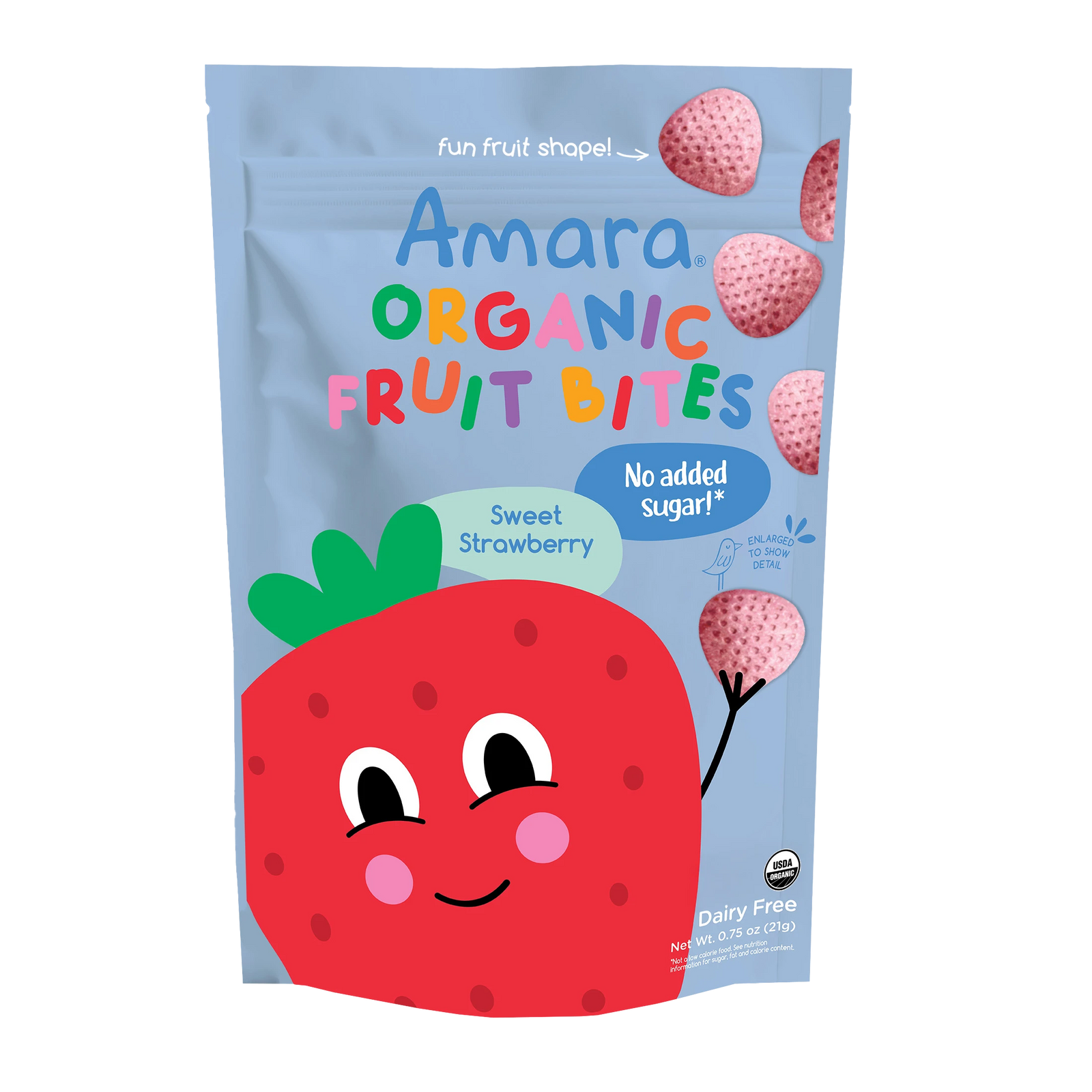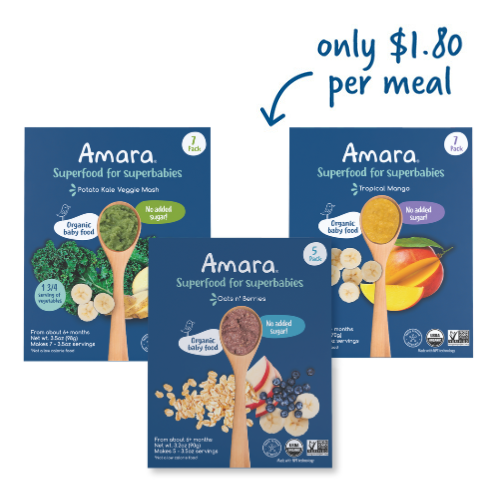Introduction to Solid Foods and Amara Baby Food
By PhD Nutrition Sonia Schiess
Part I
Introduction to Complementary Foods
Research shows that many international recommendations suggest to start with complementary foods after the age of 4 to 6 months and the World Health Organization, WHO, recommends exclusively breastfeeding until 6 months old, before introducing any solids. With the growth and development of the child, her/his nutritional needs will increase and may not be satisfied anymore by breastmilk or formula milk alone. This means that it is time to start with complementary foods. Starting complementary foods means that besides breastmilk or formula milk; other nutritious foods will be incorporated in your baby’s diet more and more.
Differences Internationally in the Introduction to Complementary Foods
On an international level, we can observe how each country has a different approach to how complementary foods are introduced. More specifically, there are great variations internationally about what kind of foods you start introducing to your baby first. You start introducing your baby to solid foods because your baby will have a higher requirement for energy, protein, iron. In some countries, parents start introducing solids with simple fruit or "sweet" vegetable mashes so that the baby can start to learn how to swallow food. In the USA, fortified cereals are generally used to provide the required nutrients.
In other countries, we see that parents start solid foods with a mixture of vegetables and potatoes; or cereals and meat or fish with fatty oils. Most countries prefer to start with simple ingredients so that the infant can learn to differentiate the different tastes and textures. In case of allergic reactions, this approach also helps parents know what the baby is allergic to faster.
Reality of Complementary Foods
Now the theory and dreams are wonderful, but to put all these ideas and wishes in to practice is sometimes far away from the daily reality. Due to the commitments (work, family, etc.) time is scarce and the minutes for shopping, cooking and feeding food are hard to come by. We all want to serve the best food for your baby but between all the daily activities, it becomes harder and harder to take the time to cook for your baby.
That’s why Amara’s dream and mission is to search and produce baby food that is as natural as possible. At Amara, we want to work with simple, real food ingredients, so that your baby can taste the real flavors and textures.
It’s important to us that the quality of the ingredient is maintained through the process so that the valuable nutrients and phytochemicals are kept in. Less process normally keep in more of the nutrients as well as natural taste, flavor and texture. We decided to give preference to the dehydration process, with low temperatures and pressure to preserve the real food ingredients as natural as possible. Obviously some ingredients (like cereals, potato or beans) will need to be cooked to be suitable for baby food. For each ingredient, we carefully choose the best way to keep in the valuable nutrients, tastes and textures, as well as making sure they are digestibility adequate for the baby.
References
http://www.who.int/nutrition/topics/complementary_feeding/en/







Leave A Comment